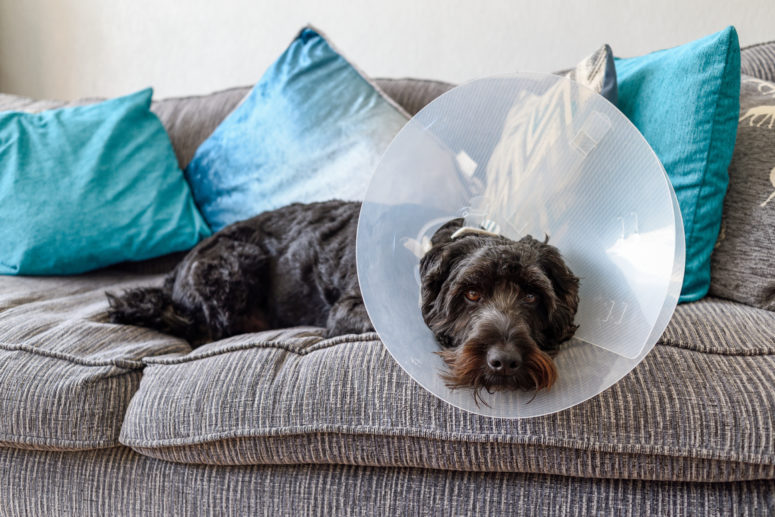
You may have heard how avid runners are notorious for discounting pain or not resting long enough when injured. Dogs exhibit similar behavior – they’re known for ignoring discomfort in order to run and play like usual.
After a surgery, though, it’s crucial for your pet to get adequate rest in order to heal properly. That means coercing an active canine to stay relatively still for a period of time. That time frame ranges depending on the procedure and situation-specific factors, so it’s important to follow your vet’s recommendations and ask questions about what is acceptable.
You can’t sit your pet down and explain the importance of recovery, so how can you possibly get your eager-to-play pup to take it easy? Here are a few tips.
You do the work.
When possible, carry your pet up and down stairs, or over any more challenging obstacles. Don’t hurt yourself or stress if your dog isn’t small or light enough to help in this way; offer the support you can, and block off areas as otherwise needed.
Get out the crate.
We know, this one may be tough. But you don’t want your dog wandering about the house when you can’t keep an eye out for off-limits movements and activities. Keep your dog confined to a small space while you’re away from home. It doesn’t have to be the dreaded crate – a small room, playpen, or baby gates are practical options.
Keep your dog on a short leash
You can’t avoid potty breaks during surgery recovery, and you can’t simply open the door and let your dog outside to roam freely. Not only should you use a leash to let your dog relieve himself, but make sure it’s short enough to prevent wandering around the yard. Hang up the retractable leash for now and choose one with a fixed length.
Skip the walks and playtime.
Walking or playing fetch with your dog is your special bonding time, and changing your daily routine can be difficult. Even if your dog is relentlessly begging to go out and play, you must keep exercise to a minimum during recovery. Avoid the buzzwords that your dog associates with playtime, and if you’re headed out for a solo walk, keep it on the down low.
No jumping on the furniture.
Explosive motion can definitely impede healing or cause more damage to wounds. Be vigilant and assist your pet in getting onto and off of any elevated lounging place.
A room with a view
While your dog isn’t able to go outside and run around during the healing phase like he probably wants to, setting up a little camp with a clear, stimulating view of the outdoors can help relieve that desire.
Exercise for the mind
Keep your dog busy in ways other than moving around. The possibilities for a mental workout are virtually endless! You can buy food dispensing toys or interactive toys – anything that makes your pup work for food or treats while building problem solving skills. You can also spend time teaching basic obedience skills or tricks (that don’t require a lot of movement).
Cuddles, cuddles and more cuddles
Ah, the easiest one. Your dog loves to be by your side, so post-op recovery is a perfect time to cozy up with your pet and relax together.
